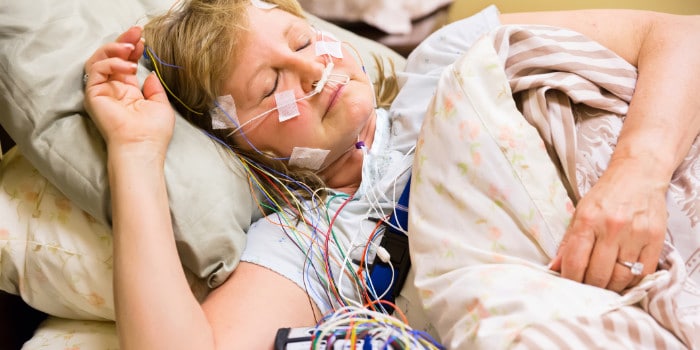Living with the CPAP machine
If you’re just starting to use a continuous positive airway pressure (CPAP) machine for sleep apnea and are having issues, take heart. CPAP therapy can be a significant adjustment for patients, but with time and patience, soon enough you’ll be dozing peacefully. Richard Howard, 41, of Clarksburg, W.Va., has been using his CPAP machine for about six months. “It took some getting used to, but now that I am a regular user, I can tell a difference in the quality of sleep I’ve been getting,” he said. CPAP machines are prescribed to people diagnosed with obstructive sleep apnea, a disorder in which a person periodically stops and starts breathing during sleep. Dr. Vikas Jain, a sleep specialist at Integris Sleep Disorders Center of Oklahoma, noted patients prescribed with a CPAP machine often are hesitant to use the technology—until they learn the risks associated with sleep apnea. “A lot of patients just think of it as snoring, but once they realize there is a higher risk for heart attack, stroke and hypertension, sometimes I think that perks their ears up and makes them realize it’s a little more serious and deserves the appropriate attention,” Jain said. CPAP machines, like cars, come in various styles and sizes. And, like cars, it’s important for those prescribed with a CPAP machine to choose the best model that fits their needs. Newer CPAPs can record data such as leaks, what pressure the machine registers and other information that helps the physician make adjustments and troubleshoot problems. Such features —along with other patient help solutions such as SleepMapper, a mobile app and web-based system the provides personalized feedback on a person’s sleep experience using a CPAP—can help ease the transition to using the CPAP. Howard, for his part, initially had his doubts about using the CPAP machine. “I am used to it now, but at the beginning—especially the first few weeks—it was awkward,“ he said. "Physically, I wouldn’t necessarily say that it was uncomfortable. Psychologically, that was a different story—the first 10 days or so, when I first put it on, I was self-conscious.” Now, the biggest issue Howard has with the CPAP is that his 5-year-old daughter and dog don’t like it. “Sometimes, the dog still barks at it,” he said. “I tell most patients to put the mask on for the first 30 days no matter what, because usually by day 30 it’s generally better than how it felt on day one,” says Jain. CPAP is a process. Patients should follow up with a sleep specialist or their physician to make any modifications. When used successfully, the CPAP machine helps sleep apnea sufferers sleep better and reduces snoring, so users wake up feeling more refreshed and more alert. What’s more, they have better short-term memory, focus and concentration, and may have better-controlled blood pressure and blood sugar, according to the American Academy of Sleep Medicine. “I have found that I’m more alert in my daytime activities,” Howard noted. “In the past, I would sometimes catch myself dozing for a few seconds during the day. I’m much more refreshed now.”


